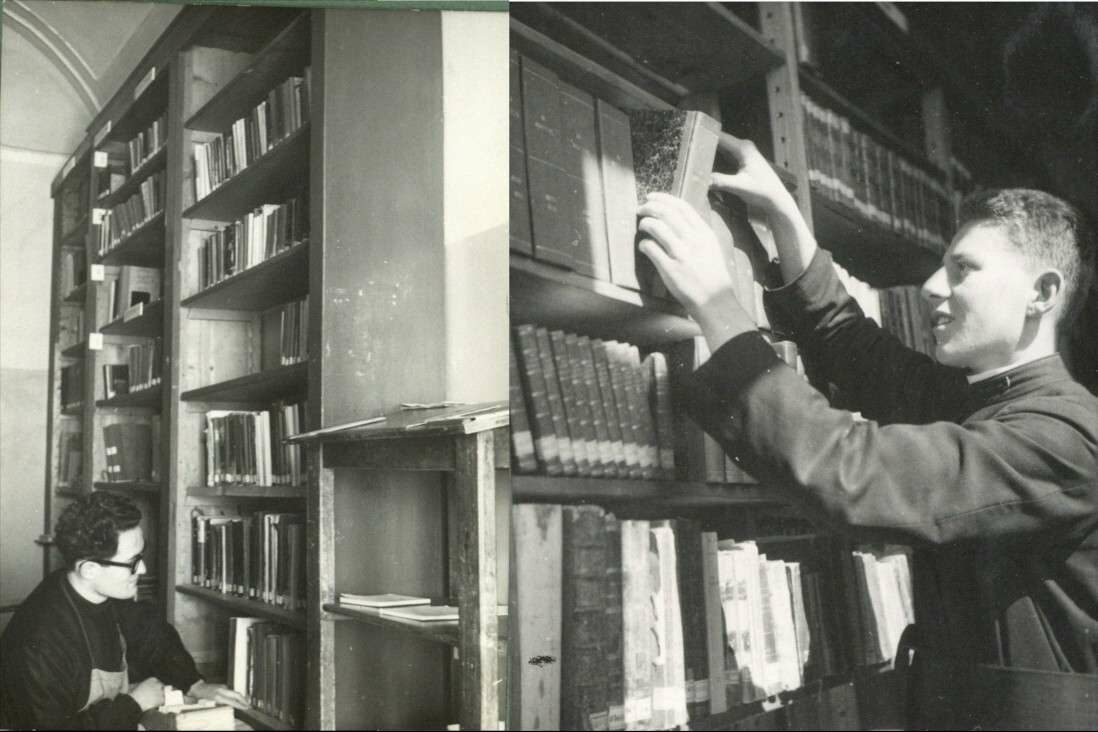What did the Jesuits study?

There were indeed numerous subjects studied by novices and scholastics on the way to becoming a Jesuit. Not only the Holy Scriptures, canon law and Church history, but also Latin, Greek, rhetoric, Hebrew. Those who entered the novitiate as future coadjutor brothers followed a shorter course of study, starting work immediately in the communities, but unlike scholastics and priests they also studied nursing, had notions of pharmacy and first aid.
Study paths yesterday and today
Some of the disciplines we mentioned are no longer part of the study path of those who are now in the novitiate or scholasticate.
There are, however, several core subjects that have always characterised the Jesuit course of study: philosophy and theology, for example, which have several cycles of study, carried out after the two years in the novitiate.
We can now ideally sit at the desk, next to a Jesuit in formation and open some of his books, discover the subjects he studied, thanks to an interesting document.
The personal file of a resignation from the Sicilian Province contains the syllabus of the philosophy course held between 1954 and 1957 and that of the theology course from 1957 to 1959, at the Major Archiepiscopal Seminary in Palermo.
School subjects
The studies began with scholastic philosophy, with Boyer’s textbook, Cursus Philosophiae ad usum Seminariorum in two volumes, as well as the professor’s handouts.
This was followed by two courses in the history of philosophy, with related texts.
The theology course included several disciplines, starting with fundamental dogmatics with Calcagno’s textbook, Cursus Theologiae Fundamentalis, in addition to the auxiliary books: Manual of Apologetics, Theologia dogmatica, Synopsis theologiae dogmaticae.
For Sacred Scripture, the syllabus indicated Perella’s text, General Introduction to the Bible, the reading and commentary of several Psalms. The study of Hebrew made use of a Hebrew grammar by Corazzini.
Other fundamental subjects follow: moral theology, ecclesiastical public law, ecclesiastical history, patrology, liturgy, asceticism, pastoral, administrative law, sacred chant, dommatic theology, Sacred Scripture, morals, law, ecclesiastical history, again patrology and liturgy, art.
Textbooks
Texts on ecclesiastical history include the books by Ragas, The Church of the Apostles and Martyrs and The Church in the Time of the Barbarians, The Church in the Time of the Crusades and Cathedrals; for the study of the liturgy, the liturgical catechisms and the Liber sacramentorum are fundamental.
The presence of administrative law may come as a surprise, but it was fundamental for a religious to be able to manage property assets and to verify accounts and budgets in line with State regulations, for which the text Administrative Criteria of Ecclesiastical Economy was recommended.
For sacred chant, one relied on the official liturgical recitatives, but one also studied: composition, rhythm, execution of the Gregorian.
The texts provided for the study of the Holy Scriptures were also very interesting: the Old Testament, Ricciotti’s History of Israel, Problems of Biblical Early History, Christ the Redeemer in the Old Testament, Centuries on the World.
The scholastic also notes in the syllabus some books read during the study cycles: The Church by Liri, Life of Jesus Christ and Bible and Non-Bible both by Riciotti; the text Philosophy of Inorganic Nature by Hoenen.
The syllabus is particularly dense, most of the subjects are the same as those taken by scholastics in our province at the Pontifical Gregorian University or other universities abroad, certainly with more up-to-date textbooks.
The photographs show some novices grappling with the study and binding of texts in the Lonigo novitiate.
Maria Macchi











